How to choose the right type of reverb for your mix
GEAR EXPO 2024: A dash of reverb can make or break the sound of your mix, so careful selection is key for getting the right spatial qualities
GEAR EXPO 2024: When it comes to reverbs, the choice is often bewildering. Today we're taking a look at the different options and where they work best in a mix.
When we are recording instruments we inevitably capture some room sound, and for instruments such as drums and piano this can be a vital component of the final mix sound. Nevertheless, much of the time we are adding artificial reverb to dry sounds, and doing this tastefully and successfully will require a combination of balancing technique and the correct reverb choice.
In a previous tutorial we looked at a quick and reliable mixing technique using three reverbs (small, medium and large), but didn’t really dwell on actually choosing the reverbs. This time we’re looking at specific types of reverbs and where we might use them.

Reverb plugins cover all classic reverb types including digital (algorithmic), convolution and hardware emulations of favourites such as plates and springs. Algorithmic reverbs have lots of adjustable parameters with potentially extreme settings, and by incorporating different algorithms they provide a massive sonic palette.
In contrast, plates and spring emulations are more basic but capture some analogue mojo. Convolution reverbs use captured impulse responses to recreate both real life spaces and real hardware, and typically can import raw impulses responses. Ideally it’s good to have examples of each in your plugin toolkit.
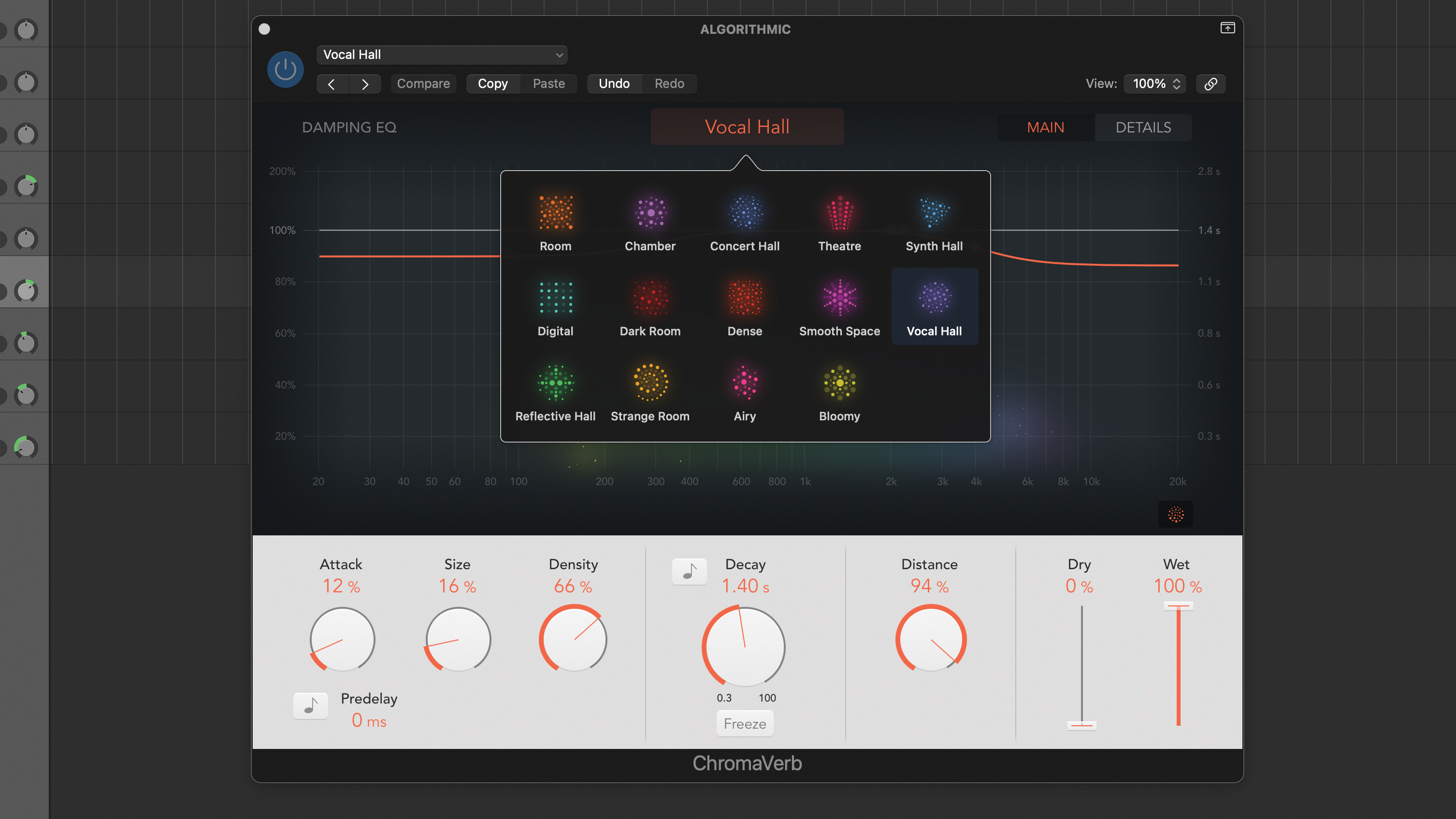
If you had to use only one type of reverb, then it’s probably going to be algorithmic. Not only do the available algorithms (room, hall, chamber, plate, non linear, and so on) tackle most reverb types, but they are highly editable and blend well in a mix. That said, make sure you’re using a good quality plugin like the ones we’re using here.
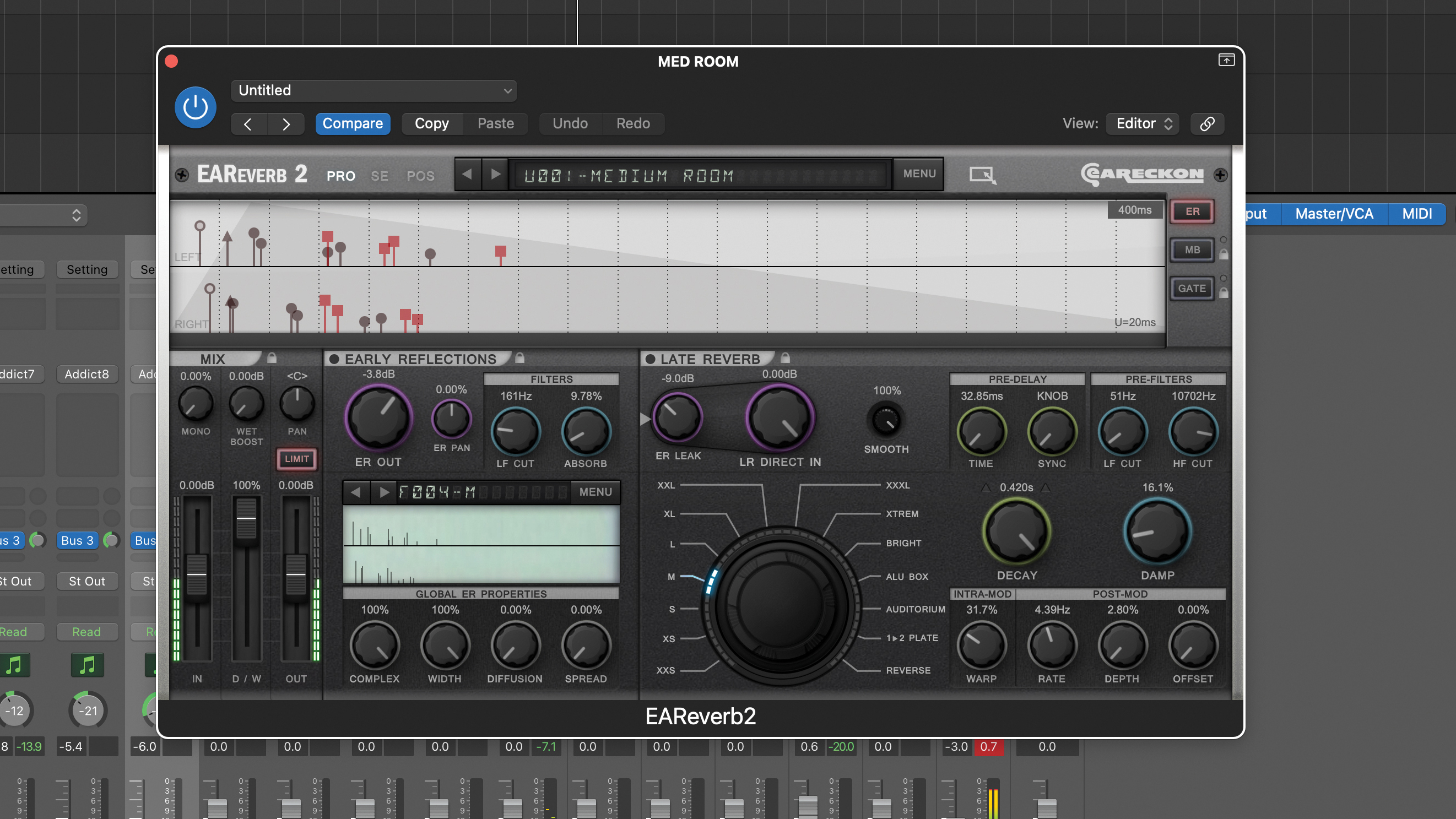
Algorithmic reverbs are great for core reverbs. A hall or stage style preset is ideal for vocals and synths, or if you’re after something more intimate, then ambience or small room presets work very well. We’ve loaded up a regular medium size room, which is a great choice for adding depth to drums, piano, synths and strings without creating too much reverb decay.
Want all the hottest music and gear news, reviews, deals, features and more, direct to your inbox? Sign up here.
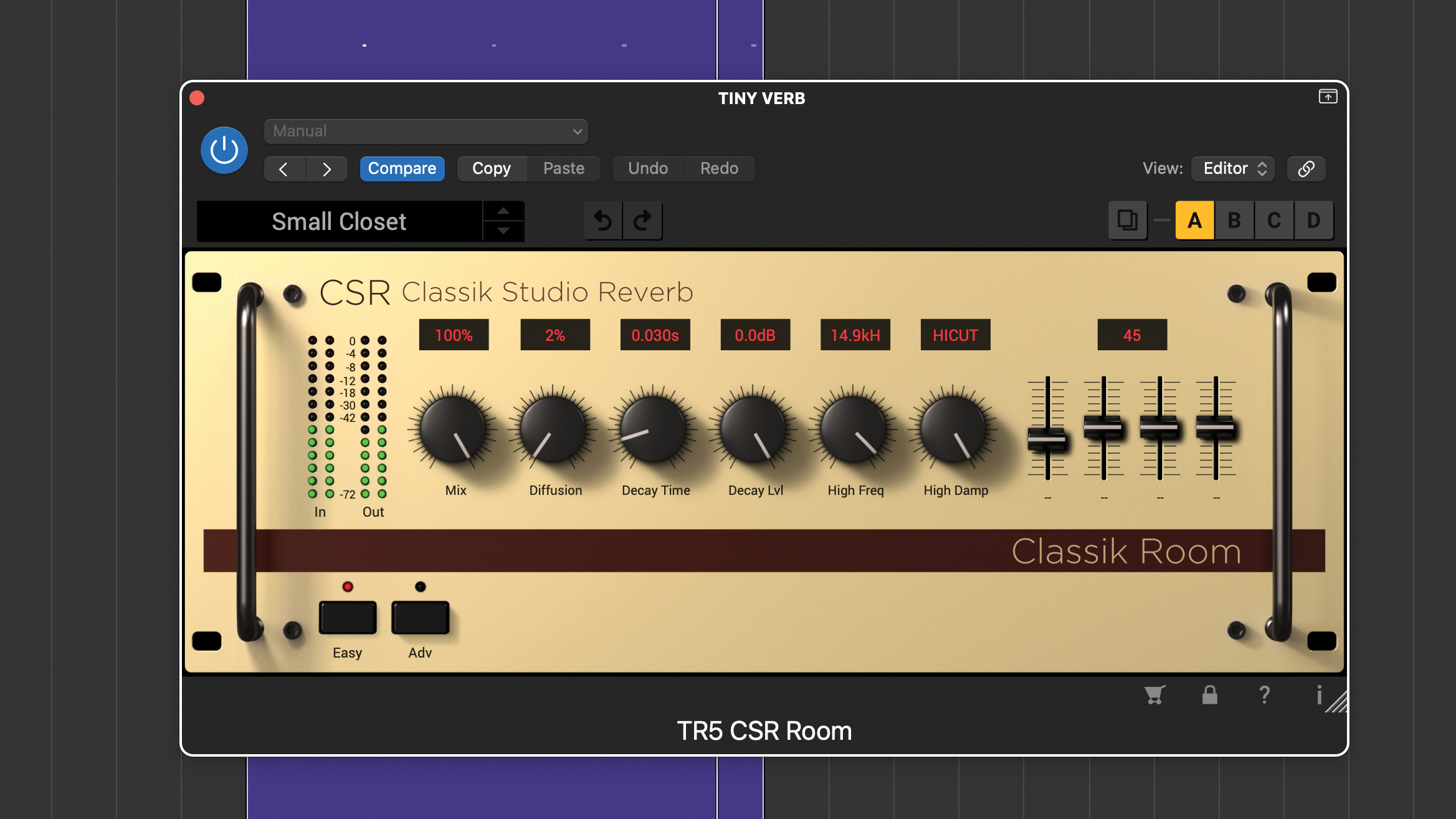
Well designed algorithmic reverbs also convincingly deliver very small spaces. These can help add width, or simply give a sense of space to otherwise dry sounds. A short reverb (30ms) gives our bass sound some depth without really sounding like a reverb. With no extended reverb tail it also doesn’t eat into the sonic space too much.
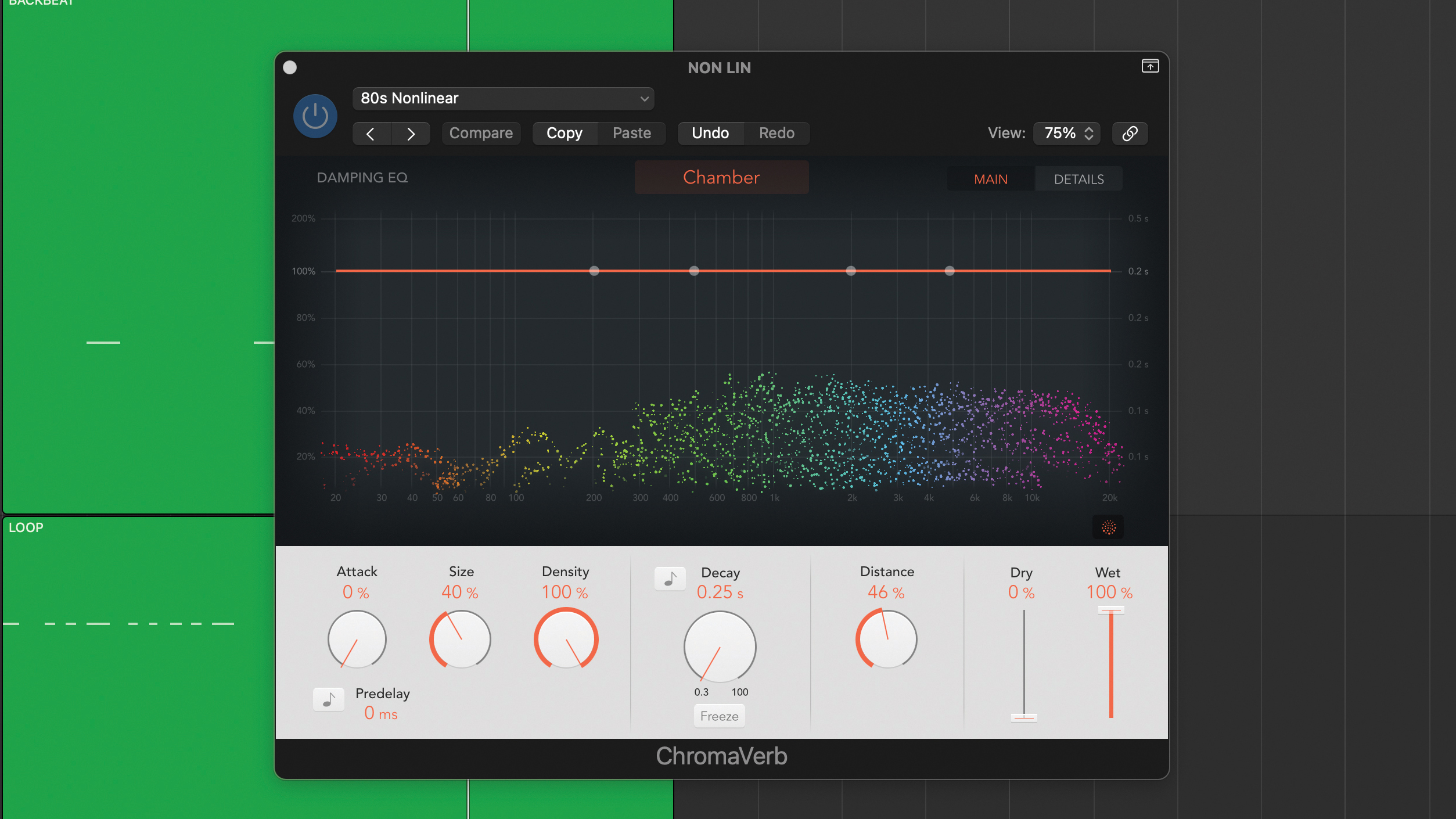
Non-linear reverb has a dense short decay that sounds untypical for a reverb. It creates quite an obvious ‘effect’ that adds presence to backbeats and kicks without getting in the way. Here, our suitably named preset (80s Nonlinear) uses a high density chamber algorithm with minimum decay (250ms) and reduced size (40%) to add tight depth to the snare.
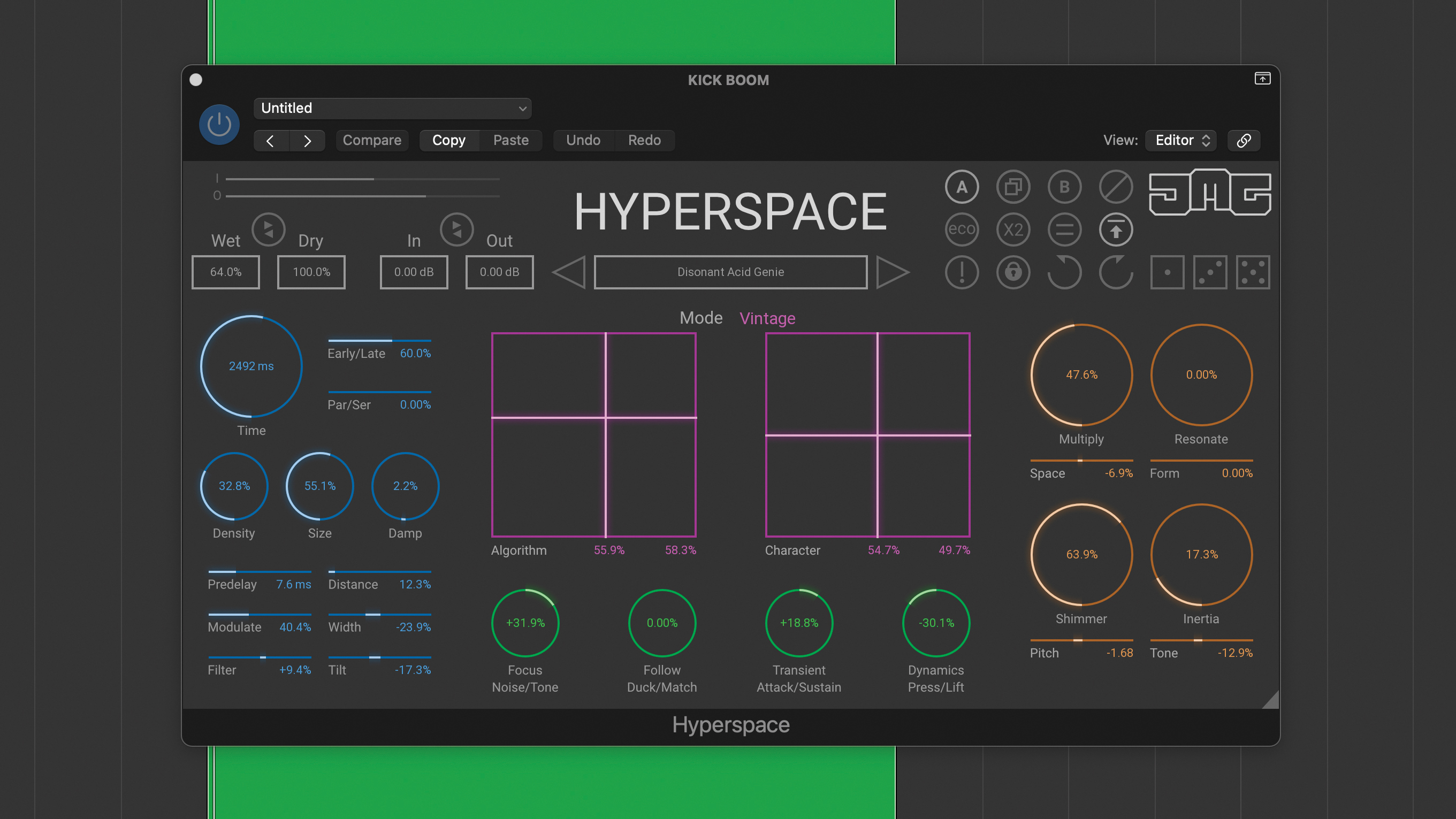
Being artificial, algorithmic reverbs can create extreme spaces, from tiny and clattery to massively long. So, if you’re trying to create a big wash-out reverb or verby spot effect, this is your tool. We’ve coupled a hard kick with a very long reverb (we’re using JMG Audio’s Hyperspace), to create a perfect drop transition effect.

Plate reverbs can be a great choice when you want something with character but also with a more traditional sound, and although you’ll find plate options in algorithmic reverbs, hardware plate emulations are often simpler and deliver the character of the original device. Here we’re using the UAD EMT 140 emulation.

A modest amount of a long reverb works well for vocals. We’ve set our reverb time to the maximum (about 5.5 secs), creating a lovely rich space for our female vocal. Even so, it’s a bit too dense for the mix, so we’ve used the onboard EQ to cut the lows and boost the highs for a lush, shimmering effect.
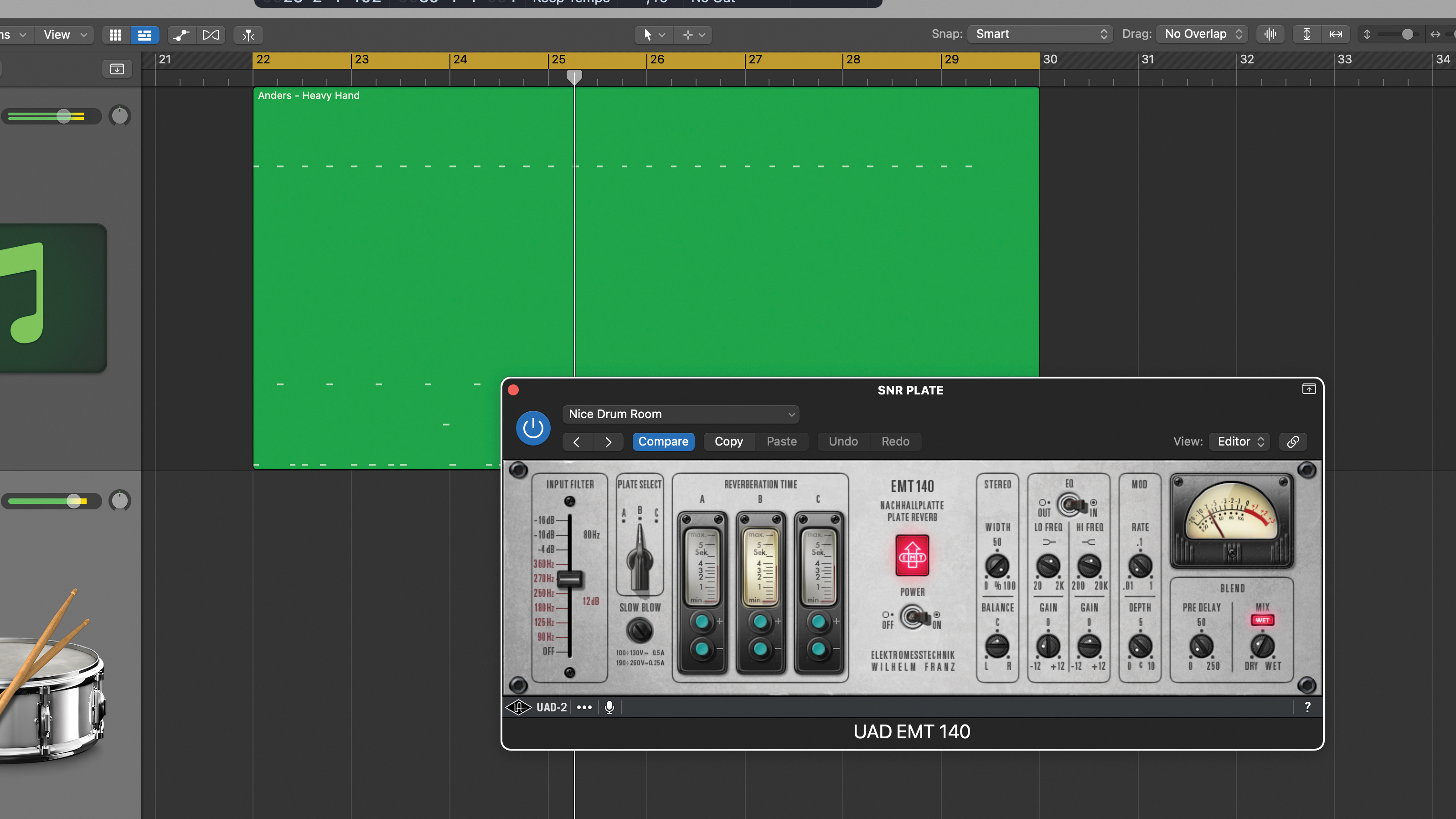
A plate can also be excellent at short settings. We’ve switched to plate B, which is slightly darker sounding, and set it to its shortest setting (about 500ms). Adding this to just the snare in a regular drum kit works well, making the snare more lively without influencing the rest of the kit balance, which we’re happy with.

Spring reverbs are good for adding obvious colour to sounds. We associate them with electric guitar as they’re integral to many guitar amps, but you’ll also find them used heavily in reggae, dub and anywhere you want a twangy-sounding space. For this sound you can’t beat a dedicated plugin, and we’re using PSP Audioware’s SpringBox.
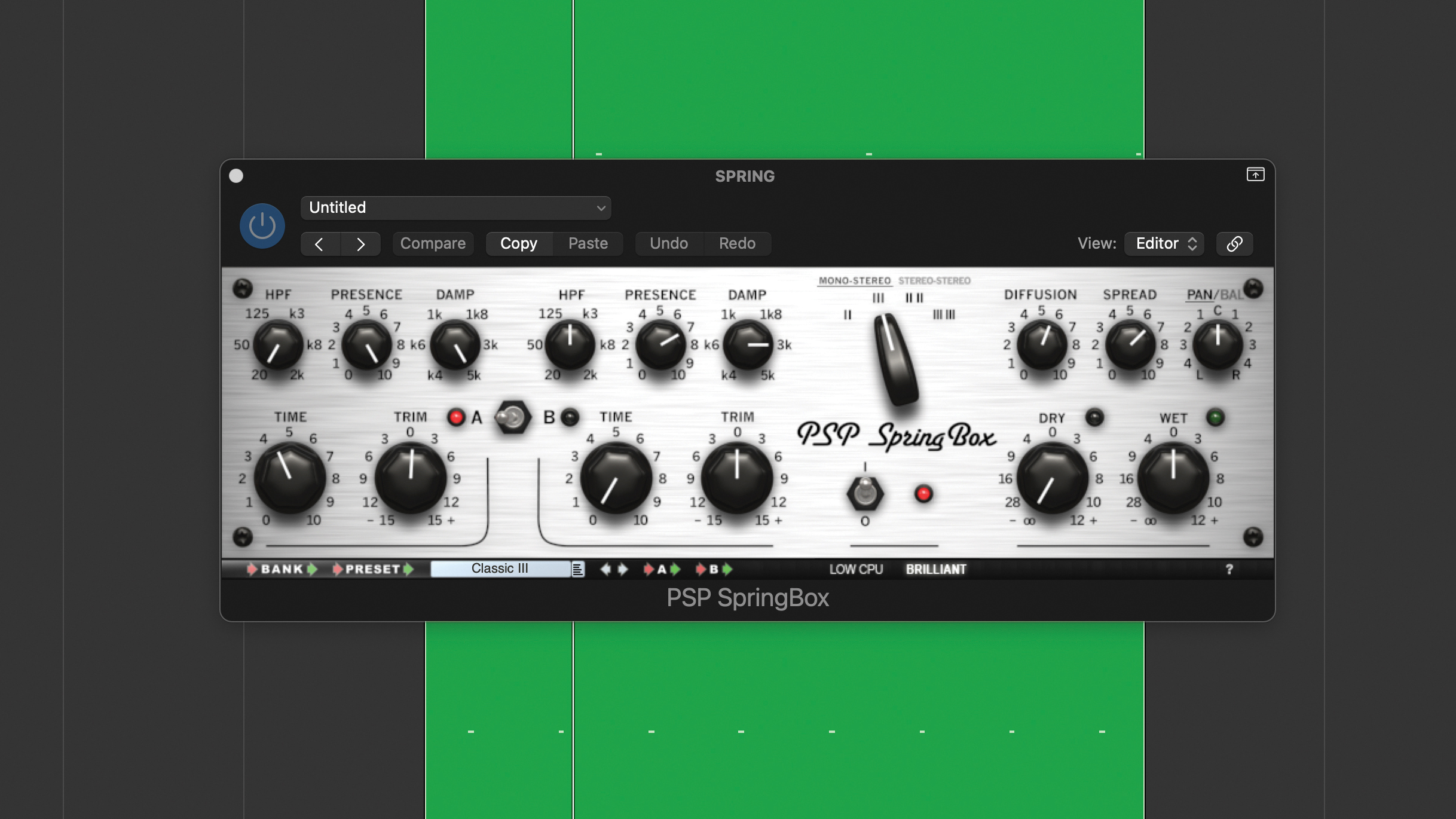
Our beat is a reggae one-drop pattern, with the kick and side stick playing together. We’ve sent just the side stick to the spring reverb. On this particular plugin, the Diffusion control and Time setting are key to how pingy the sound is, and we’ve increased the Diffusion and reduced the Time setting to taste.
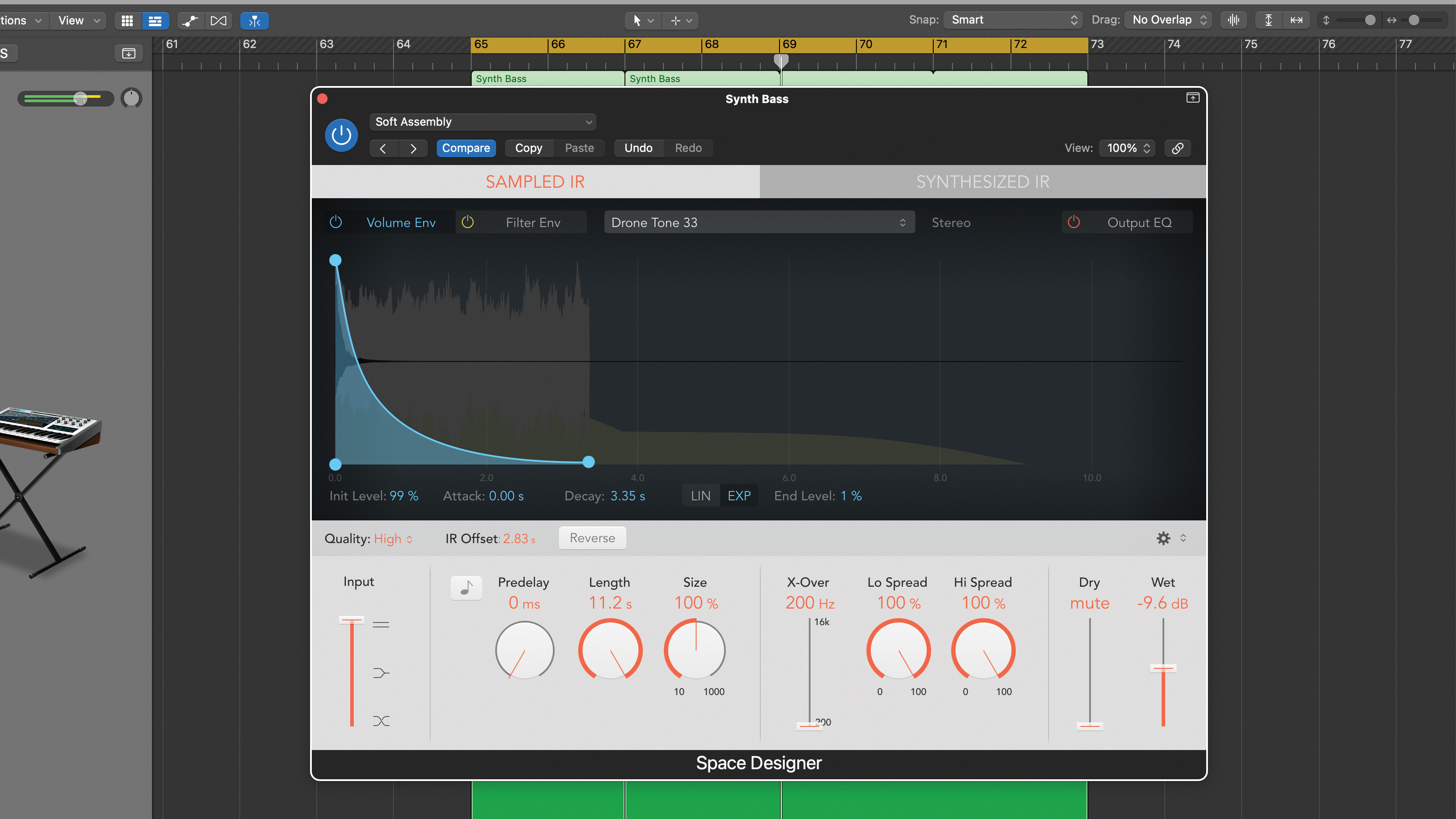
If you’re trying to create a specific environment, a convolution reverb is the tool. But beyond the obvious effects (arena, stairwell and so on), impulses can also be used to impart amazing tones and textures. Here we’ve used an effect impulse (Drone Tone 33) to completely transform our bass sound.
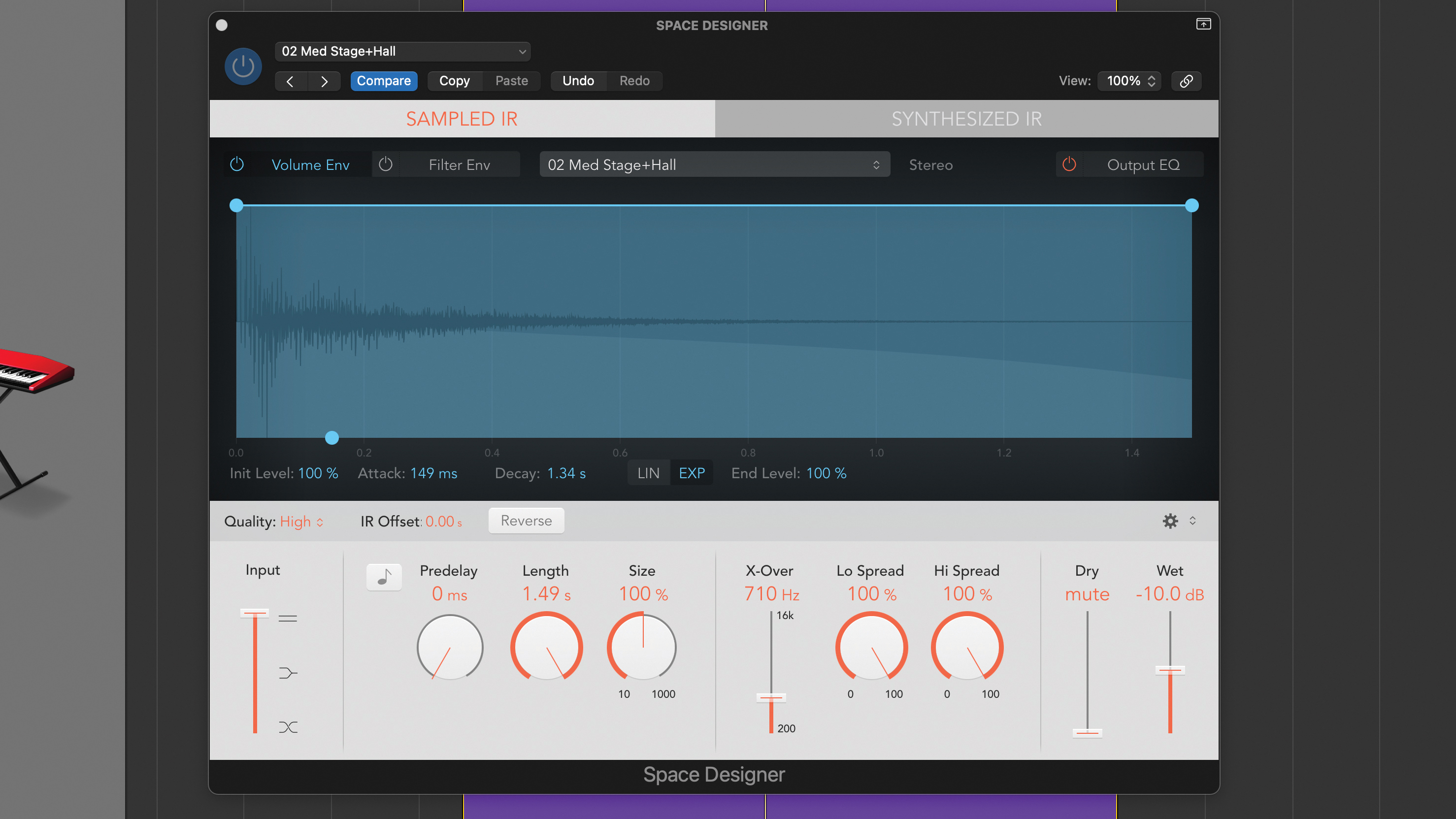
Convolution reverbs are also great for recreating hardware. We’ve loaded a classic Lexicon 480L sourced preset (Med+Stage) for our synth. Cheap, quality impulses from Lexicon, Bricasti and other hardware classics are easy to find. With convolution reverbs typically supporting WAV impulse import, you can expand your reverb palette.
Pro tip
Software instruments invariably include their own effects, and for synth patches in particular, reverb is often a vital component of a preset’s sound. Even drum kit instruments typically use a combination of recorded room sound and onboard reverb. These reverbs can be good and in a mix context it can be hard to decide whether to stick with them, replace them with something else, or even do a combo of both.

Best reverb plugins 2023: Amazing space-makers for your DAW
If you’re running these instruments live in your mix, rather than working from bounced audio tracks or stems, the three options above remain open to you throughout the mix process, and this can be helpful. Even if the onboard reverb is integral to a sound, say, and you decide to stick with it, you can still adjust the amount and edit its sound to help it fit in with the mix.
That said, our preference is to remove all but the most necessary soft instrument reverbs, replacing them as required with regular DAW plugins. This not only leaves more choice, but we also find that using auxiliaries to share reverbs across multiple sources has a positive impact on how a mix gels.
Recommended listening
1. Sub Focus & Dimension - Desire
Great choice of washy, medium and tight reverbs finesse the production of this track.
2. Dave ft. Burna Boy - Location
Careful use of a bright medium room and short wide verbs add subtle polish to vocals, beats and more.
Looking for more great new gear? Get all our round-up, news, features, tutorials, tips and more at our Gear Expo hub page.
Jon is a London based platinum award winning mixer, producer, composer and club remixer with a diverse CV that spans dance, pop, rock and music for media. He’s also a long term contributor to MusicRadar's music technology tutorials and reviews. Whether working alone or collaborating he usually handles final mixdowns, so you’ll also find MusicRadar peppered with his handy mixing tips.
